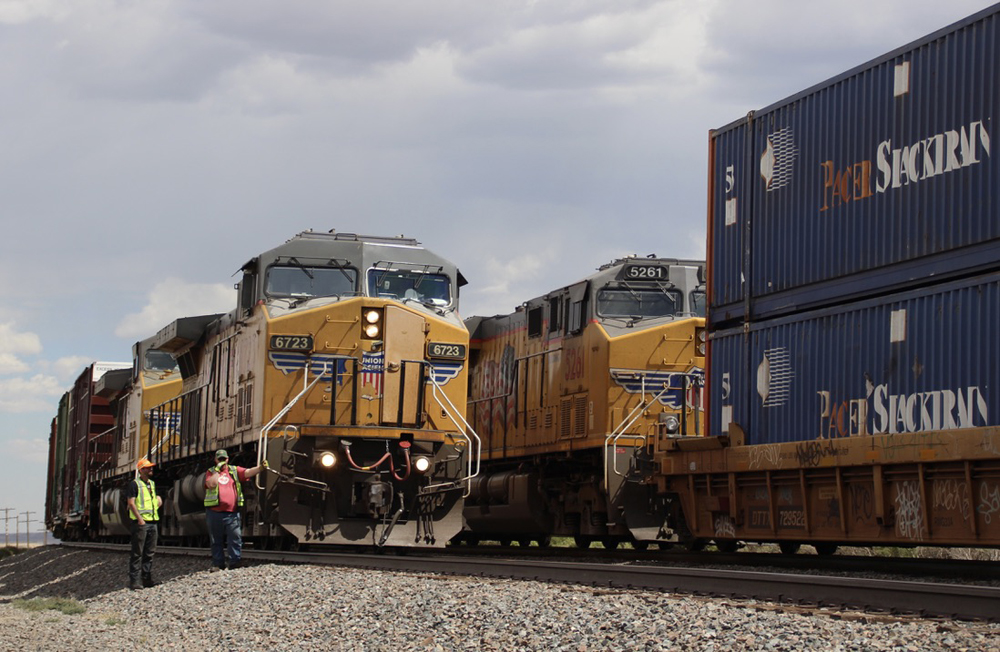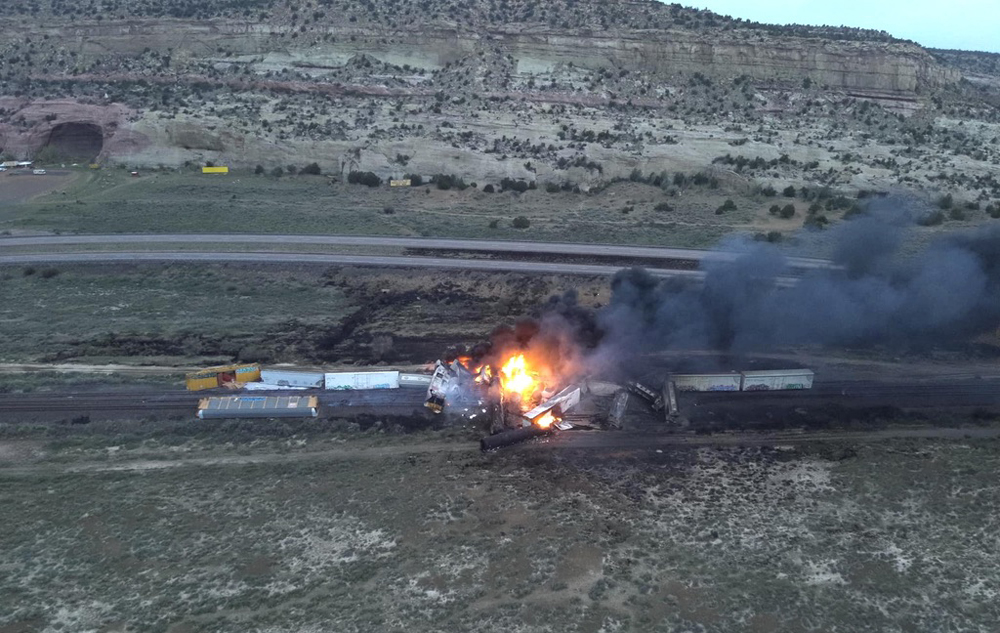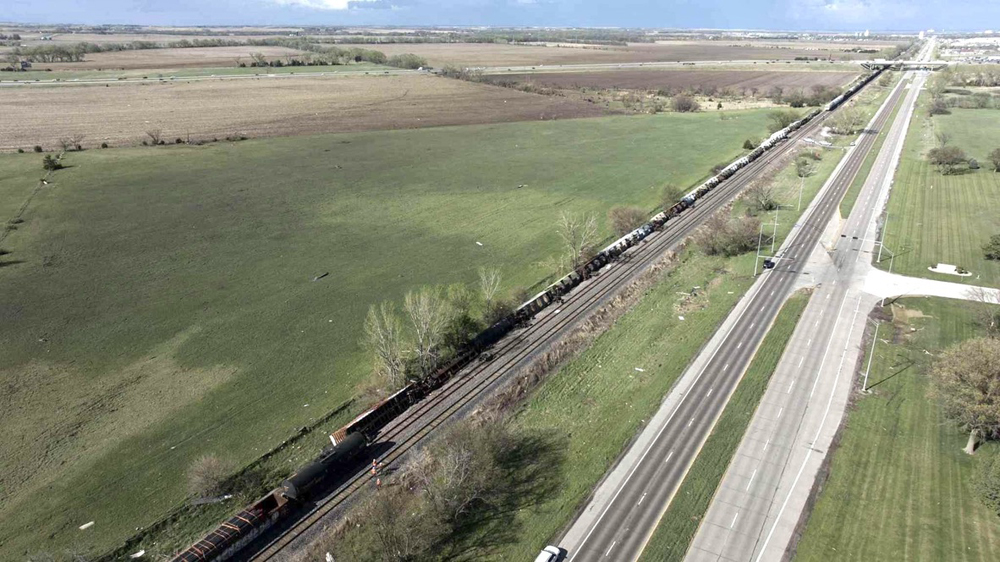
The prospect of a disruptive U.S. freight railroad strike was averted thanks to the tentative deal reached overnight between the Class I railroads and the labor unions that represent engineers and conductors, but three key questions remain unanswered. And all of them suggest that railroads, their workers, shippers, and the U.S. economy are not out of the woods yet.
First, will the rank-and-file approve the contract? That’s not clear.
Rail labor in general and train crews in particular have been up in arms for the past few years. They’re upset about working conditions, the massive wave of layoffs that began in 2017, and operational changes related to Precision Scheduled Railroading. They’re fuming about the lack of a raise since 2019 despite being front line workers during a pandemic. And they don’t like talk of taking conductors out of the locomotive cab and shifting them to ground-based positions.
The tentative agreement with the SMART-TD union and the Brotherhood of Locomotive Engineers and Trainmen seems to check all the boxes: A 24% raise, compounded, over the five-year life of the contract, plus $5,000 in bonuses; no increase in health care costs; and changes to work rules that provide more guarantees for time off. The deal also includes protections for two-person crews.
But machinists this week rejected the tentative deal their union reached with the railroads last month. The early reaction from the BLET and SMART-TD rank and file is not encouraging. So there’s no guarantee BLET, SMART-TD, and the other nine unions involved in negotiations will ratify their proposed contracts. And that means we could be in for another round of negotiations and more strike drama.
The second question: If the deals win ratification, will engineers and conductors who are tired of their jobs stick around just long enough to pocket their back pay and bonuses and then pull the pin?
If the wages, benefits, and work rules changes are enough of an incentive, they’ll stay on. If not, they’ll take the money and run. So there could be an exodus of engineers and conductors just as BNSF Railway, CSX Transportation, Norfolk Southern, and Union Pacific get close to solving their ongoing crew shortage problems.
This leads us to the third question: Will the new contracts and higher wages be enough to ease the railroads’ conductor recruitment woes?
In an extremely tight job market, railroads have struggled to find new hires for a job that’s 24/7/365, involves working outdoors in all sorts of weather, and requires time spent away from home. It’s not yet clear if the higher wages will lure people away from jobs that pay less but offer predictable schedules and let you sleep in your own bed every night.
These three questions are critical to the industry’s future, both in the short term and over the longer term. If there’s anything crew shortages have proven over the past year, it’s that railroads can’t run well or meet freight demand if they don’t have enough people.

The crew-related service problems at the Big Four U.S. railroads have given the industry a black eye. The uncertainty raised by the prospect of a strike, and the disruption it posed to already frustrated shippers as railroads curtailed some service in preparation for a walkout this week, didn’t help matters.
In the second quarter, the U.S. Class I railroads all reported some combination of record revenue, profits, and earnings despite providing awful service that drove away business and alarmed regulators. It’s as if the railroads have a license to print money.
Yet the industry can ill afford a second wave of crew shortages and crummy service. Some observers fear that shippers who diverted their freight to trucks over the past year may never come back to rail. You shudder to think what would happen if the railroads’ slow but steady pace of operational improvements sputters out because the Big Four systems can’t retain train crews or hire new conductors.
What railroads need now is more stability and less uncertainty. The best way to go about it would be for labor and management to iron out their differences.
You can reach Bill Stephens at bybillstephens@gmail.com and follow him on LinkedIn and Twitter @bybillstephens














I know its a touch pill to swallow, but railroad management has a fiduciary duty to its shareholders first. They have to be satisfied (except BNSF which is private) before everyone else. Employees, customers. Everyone.
We all know its common sense that when you learn how to satisfy customers, you then are able to satisfy your shareholders. But for odd reasons, railroads have never seemed to fall into that line of sense.
They will pay more to the engineers and machinists *only* if it helps them satisfy shareholders. They will improve service *only* if it improves the shareholder.
Yet, as we have seen, just the opposite has occurred. Service has declined. Pay has declined, but the shareholders are very happy. This is very unusual in business terms. The recent gutting of Sears is a perfect example of this reverse business order. Like a ponzi scheme, the railroads (as we know them) cannot continue to operate this way. Eventually they will end up with no customers, no employees and by extension, no shareholders.
Are the stockholders only happy because of the major stock buy backs?
There’s only one way to end the railroads’ fiduciary duty to shareholders:
Nationalization. I keep saying that resurrecting Conrail on a national scale is the only way to arrest the decline of railroads caused by executives who care more about pleasing investors and benefitting their hedgefunds, all while treating employees as mindlessly-obedient drones with no feeling other than work, work, work.
Gerald and Charles, and others of their mind, think that they have all the answers. I’ve been out there on the RR (now retired) in T&E service. The pay and benefits have absolutely declined since I hired in the 1970s. Furthermore, an employee in the operating crafts used to be able to look forward to a time in their future careers when they could hold a steady job. One with regular hours and predictable days off. The carriers have purposely excised those “good jobs” because all they’ve focused on is cut, cut, cut. Nothing in their management planning has anything to do with improving service.
So Gerald, because you are a loner, have few friends, and don’t take many vacations (these are all HIS words folks from a previous comment in another article), somehow you feel all other workers should be like you. Go put your name in at the railroad Gerald. They will love you. Willing to work 365 days a year, be on the road and you dont take vacations. You will be a railroad CEO’s dream.
Gerald would fold like a napkin. Running the mouth and living the reality are as different as night and day.
Exactly !!!!
I am glad there is a tentative agreement and I hope the engineers and crew are happy with it. It is interesting with all the railroads going on and on about how wonderful PSR is yet they can’t have crews with regular schedule’s I seriously doubt any of the “white collar” railroad jobs are set up the same way train crew jobs are.
The Biden administration gets credit for reaching an agreement that will get the trains running, for now. Anyone who reads these articles (or the comments to these articles) knows that it could collapse at any time in the future. You can’t drive trucks without truckers, and you can’t move trains without T+E. Doesn’t matter how much they’re paid, or how good the medical insurance, if the next generation won’t take these jobs.
That problem is easily solved with a reduction in unemployment benefits and replacing welfare with workfare for those physically and mentally able to work(i.e., if they want the money, they take the job offered to them by the state). Also, what’s going to happen as more and more young people take up smoking pot, which you can’t do as a railroader(or any other job requiring the use of heavy equipment for that matter)?
GERALD — Good points.
As to your first sentence, I think that more pertains to lesser – skilled work, compared to railroading. But in general you’re on the mark.
As to your second point, you said it all and there’s nothing to add.
Of course, both of you guys are retired (functionally or really) and have no clue about contemporary working conditions. “Get off my lawn!” hahahaha
You are right on the mark Mr. Harrison.
I’ve been a locomotive engineer since 2000. When I hired out in 1996 I knew the lifestyle was challenging. But the pay was good and the health insurance was excellent. Each contract since then we have had to give up more and more. Raises were pathetic and insurance premiums kept rising. What is more of a slap in the face, today a clerk in the office who has a schedule, doesn’t have to go out of town and be away from home for days on end, can make almost as much as an engineer. What is wrong with that picture?
The article is wrong in that we will get a 22% raise which is compounded to 24%. Our healthcare costs will go up effective this coming Jan and rise again the following year. They claim they will cap it after that but it will still mean a lot more than what I am paying now.
We will get one more personal leave day for road freights or one more holiday for yard service. Getting a personal leave day or single-day vacation day approved requires management approval, which more often than not means declined due to staffing levels.
New hires are dropping out as fast as they can bring them on. The younger generation doesn’t want any part of a job that requires giving up every weekend in the entire month. Extra board employees are often called to go out of town right before they are supposed to go on their off days, so there is no way to make any plans.
The only way to solve the problem realistically is with money. Had the engineers received a 28% raise instead of the 22% we got it would have made huge difference in retaining personnel. The way it is now will probably not be enough to solve the current crisis facing the rail industry today.
What’s the big deal about being at home? It’s really not all that it’s cracked up to be…as some of those that are working from home are finding out. Just blame laziness on the part of most Millenials and Gen Z for not wanting to do manual labor and/or work outdoors. You’re trying to tell me that a clerk in the office is also making over 100k per year? That’s actually robbery as their job could probably be automated even more if not entirely. As for the weekend problem, that’s easily solved by offering a percentage increase for working on those particular days, say 10% premium for Saturday and 25% for Sunday(that’s on top of normal pay). Also sounds like this isn’t a job for people that like to make plans, but more for those that do things on the spur of the moment(which is actually much better than planning things).
Somehow working from home equals getting a little time off from work? What? Someone’s cheese has slid off his cracker, and it happened years ago.
As for Millennials or Gen Z, you do understand the concept of reality? Regardless of how little or excessively lazy the entire United States workforce is, it is an accepted fact that railroads need T&E? Or do you propose we automate freight trains? The reality is railroads are competing with other employers for the same people and they’re not winning the ball game. It really is just as simple as doing what it takes to hire and retain enough engineers and conductors to move your trains, right?
Finally, many men and women decide to start a family and when their kids get into school, how many ball games or concerts or any other function or activity is at the spur of the moment? Reality. I don’t think any rail is asking or expecting to attend every single thing, but they need to make one every once in awhile.
Well said Son.
Sums it all up right to the point of the issue,as well as adding a personal observation at the end.
Railroading has a life of it’s own.
You have to have lived it to know and understand it.
And you have.
Gerald, I’m not sure you understand train service, and I don’t comprehend how you focus on specific generational groups.
Transportation employees on my route that “only work 33 1/2 hours a week” do so by: taking a 2 hour call at some random hour that can be off schedule by as much as 12-18 hours (incompetent management), work 12-16 hours, spend 16-20 hours in a hotel, work 12-16 hours, spend 10-24 hours at home (2 hr call), work 12-16 hours, spend 16-20 hours in a hotel, work 12-16 hours, spend 10-24 hours at home (2 hr call), work 12-16 hours, spend 16-20 hours in a hotel, work 12-16 hours, forced into Mandated Federal Rest for 48 hours (flipping me from daylights to nights or vise versa).
I did this schedule for four months straight in 2014, and off and on over the last 12 months when I took off 1 uncompensated day for personal reasons and 2 more to visit with Surface Transportation Board members (also in conjunction with getting my federally mandated but uncompensated, bi-annual eye and ear exam).
Tell me again how I’m entitled for wanting to be home more than just 24-36 hours week while being on duty for 60-72 hrs a week minimum, not to mention the 36-60 hours a week I spend away from my family in a hotel room, while you coach from your couch.
Gerald, I am comparing an engineer’s basic 8 hour pay compared to a clerk’s 8 hour day. Engineers can earn more than $100K due to all the forced overtime. For some of us, it is not an issue. Others, especially those with younger children would love to be able to see their families instead of reporting back to work as soon as their 10 hour rest is up.
As far as my comment on millennial and gen z, it is just a fact. It is increasingly harder and harder to attract them to the railroad conductor’s lifestyle. I keep seeing more an more new faces. They get their sign on bonus and a lot are gone before they mark up. So lately, the RR has been hiring a lot of folks from my Generation that are here for the money. We have a CT that is 56 years old! I asked him what his plan was and he said to do 10 years. If he sticks around that would mean most of that time would be spent on the conductor’s extra-board. It’s not all riding trains either. It means pounding the rocks on locals and yard assignments when it is in the 30s and raining on at 2am on a Sunday morning.
If you think you can handle it, they are accepting applications.
It isn’t so much being at home, but being unable to take advantage of the time you have at home. With scheduling that treats employees as interchangeable machine parts instead of people, why would anyone want to work for them, regardless of the pay? The working conditions aren’t great, the engineers have to operate their trains not to run on time or be safe, but to save money for the greedy stockholders and the railroads want them to walk a mile to fix 90 pound broken knuckles by themselves.
This was all acceptable 100 years ago when railroad jobs were the only paying jobs for miles around in much of the country. But it is not 1922, it is 2022 and mobility is much improved and people have choices. They are voting with their feet, since railroad management won’t wise up.
Thank you for listing the non-salary benefits that the negotiations resulted in. The main stream media did not cover that this morning. See the Brotherhood of Locomotive Engineer and Trainmen’s statement on the tentative agreements. https://ble-t.org/news/blet-smart-td-reach-tentative-agreement-with-railroads/
Very thoughtful piece Bill– all good points.
I do hope the membership will accept the additional, albeit small gains, they received and if still mad– take the money and run.
I also hope the STB will use current proceedings and what few powers they have to continually remind them that they are not meeting their potential. Providing such lousy service, prevents more of our freight from being carried by rail– one the least expensive and most environmentally friendly methods of transportation. This drives inflation, harming our economcy and Joe Public’s well being, and drives increased pollution and climate change– also effecting Joe Public’s well being across the world.